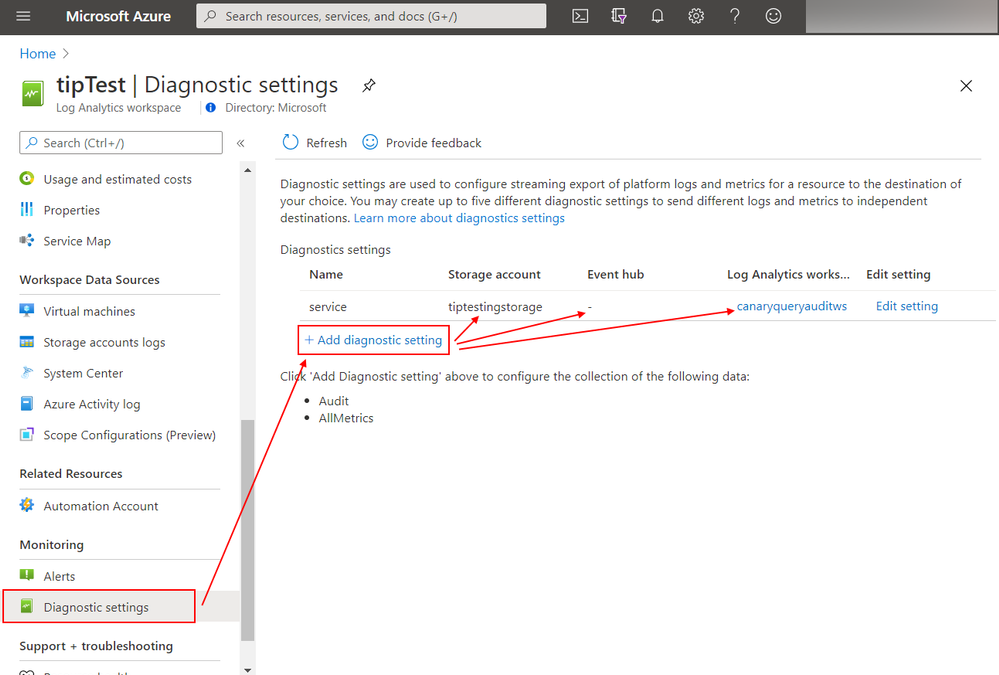
by Scott Muniz | Sep 14, 2020 | Azure, Technology, Uncategorized
This article is contributed. See the original author and article here.
One of the most requested features in Azure Monitor Logs is the ability to track the queries being executed in the system. Recently, we released to public preview the capability to meet all of these needs: the Query Audit Logs for Azure Log Analytics!
A rich dataset to monitor your Workspace
The feature was designed to answer questions around the areas of compliance, security, and performance of queries in the system.
The dataset that you will see once you enable the collection of the Query Audit Logs will include full information about each query executed. This includes information that will help you identify who ran the query, what application was used to run the query, and for successful queries, a full set of performance counters. The rich dataset will let you answer a wide variety of questions: from detecting malicious attempts to access sensitive data, to identifying queries that are particularly inefficient, and even detecting broken automation through consistently-failing queries
Collecting query audit logs is simple
Full details about how to enable and use the feature are available on our documentation page here.
Enabling the collection of the query logs is simple – just open the workspace that you want to start tracking logs for, go to the diagnostic settings, and enable the collection of the query logs into any combination of a Storage Blob, Event Hub, and/or (of course!) Azure Monitor Logs.

If you prefer to use a programmatic approach, be it through an ARM template or Azure Policy, we provide full support for such an approach. You’ll find an example of an ARM template you can use here.
Answering a wide array of questions
So what can you do with these query logs once you enable them? Below are just a few examples.
You can see the number of queries each user in the system ran:
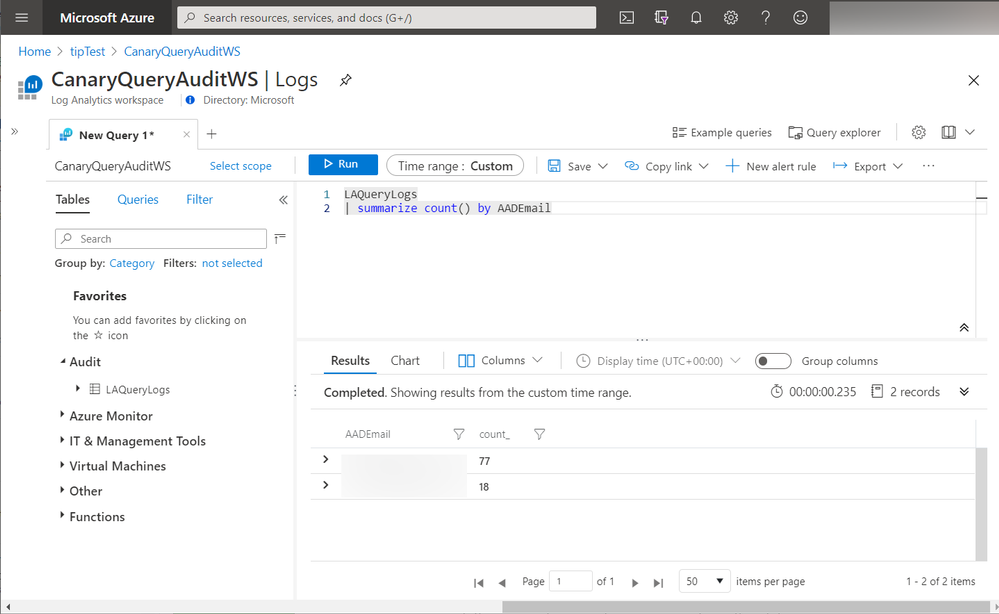
The response codes for these queries, useful for detection of failed logins (403s), or broken automation (409s):
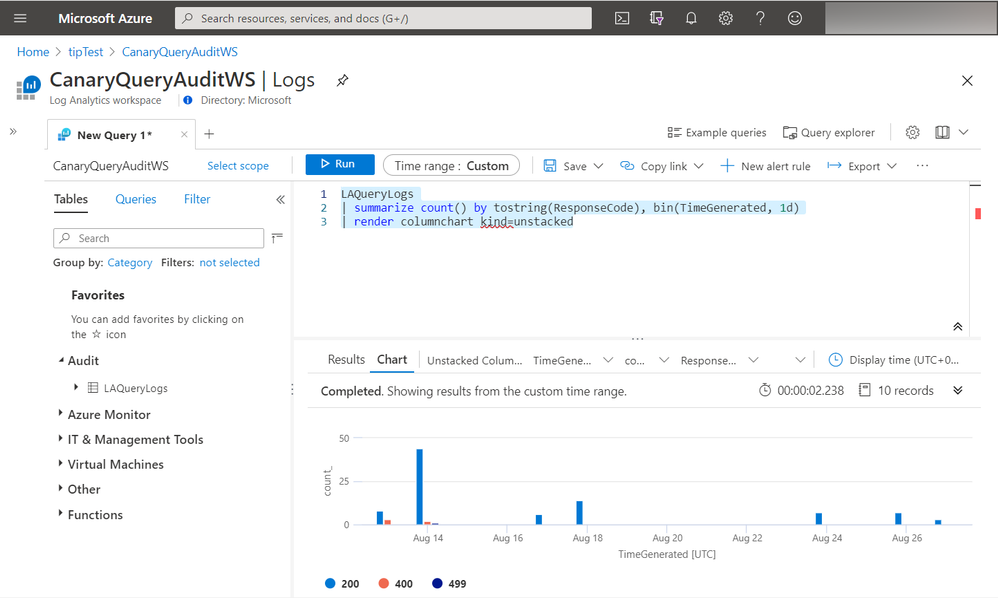
And a list of the users most advanced in their knowledge of KQL, judged by the length of query they write:
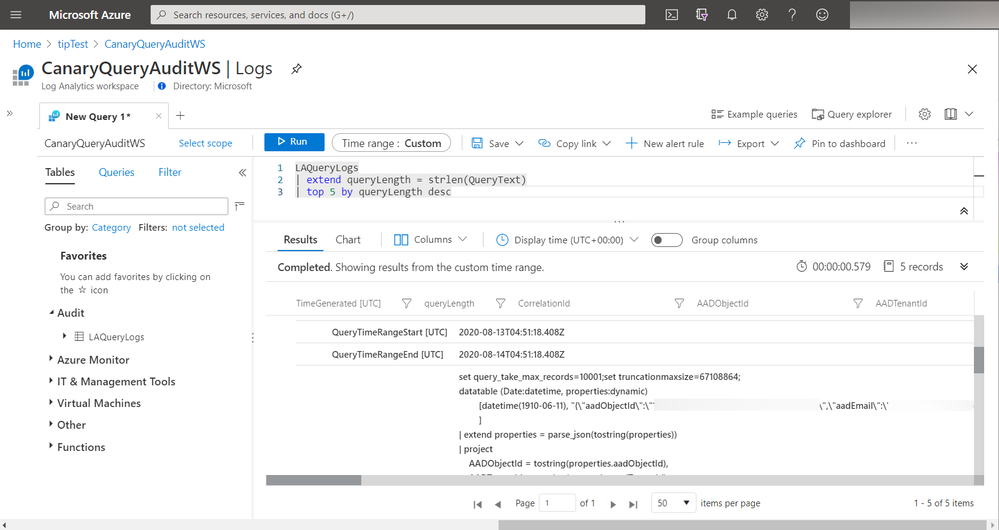
While these are just a few examples to showcase the capabilities of these logs, many more questions can be answered – give it a go and see what insights you can come up with!
Next Steps
Enable the collection of the Query Audit Logs in Azure Monitor Logs today, and start getting visibility into how your Workspace is being used. Please do let us know of any questions or feedback you have around the feature – we’re excited to see the creative ways in which these get used!
by Scott Muniz | Sep 14, 2020 | Azure, Technology, Uncategorized
This article is contributed. See the original author and article here.
Azure Media Services is highly scalable for streaming videos to mobile or web applications. It enables a customer to use high-definition video encoding and streaming services to reach audiences on the devices they use, enhancing content discoverability and performance with AI, all while helping to protect content with digital rights management (DRM).
Azure Media Services also enables a customer to live stream. With the power of Azure Media Services, there’s no requirement for any kind of special hardware or infrastructure cost. To stream your live events with Media Services, you need the following:
-
A camera that is used to capture the live event.
For setup ideas, check out Simple and portable event video gear setup.
If you do not have access to a camera, tools such as Telestream Wirecast can be used to generate a live feed from a video file.
-
A live video encoder that converts signals from a camera (or another device, like a laptop) into a contribution feed that is sent to Media Services. The contribution feed can include signals related to advertising, such as SCTE-35 markers.
For a list of recommended live streaming encoders, see live streaming encoders. Also, check out this blog: Live streaming production with OBS.
-
Components in Media Services, which enable you to ingest, preview, package, record, encrypt, and broadcast the live event to your customers, or to a CDN for further distribution.
For customers looking to deliver content to large internet audiences, we recommend that you enable CDN on the streaming endpoint.
This article gives an overview and guidance of live streaming with Media Services and links to other relevant articles.
https://docs.microsoft.com/en-us/azure/media-services/latest/live-streaming-overview
@arsalan_ali
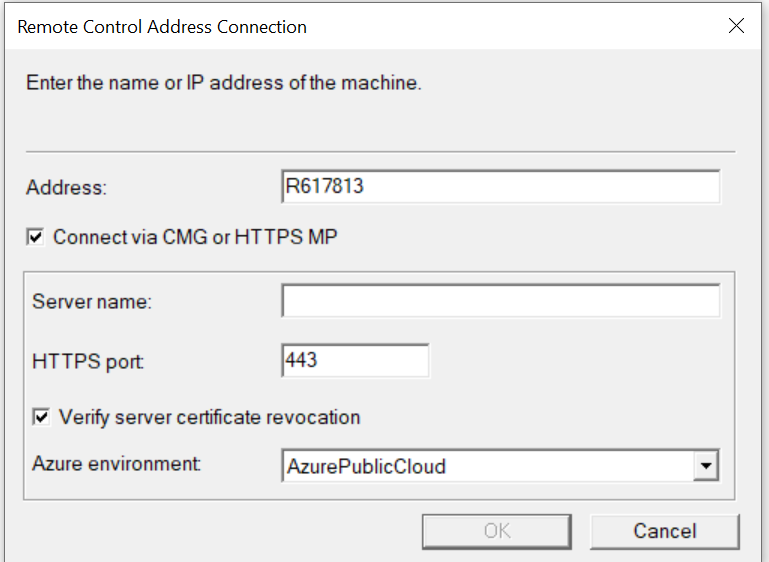
by Scott Muniz | Sep 14, 2020 | Uncategorized
This article is contributed. See the original author and article here.
Update 2009 for the Technical Preview Branch of Microsoft Endpoint Configuration Manager has been released. This release continues to improve the functionality of remote control as first introduced in technical preview version 1906. You can now connect to any Configuration Manager client with an online status.
When you start a remote control session, select the option to Connect via CMG or HTTPS MP for any of the following scenarios:
- CMG
- HTTPS management point
- Enhanced HTTP site
 Remote control connection dialog
Remote control connection dialog
Learn more about the improvements to remote control.
This preview release also includes:
Deploy an OS over CMG using boot media – Starting in current branch version 2006, the cloud management gateway (CMG) supports running a task sequence with a boot image when you start it from Software Center. With this release, you can now use boot media to reimage internet-based devices that connect through a CMG. This scenario helps you better support remote workers. If Windows won’t start so that the user can access Software Center, you can now send them a USB drive to reinstall Windows.
Cloud management gateway with virtual machine scale set – Based on your UserVoice feedback, cloud management gateway (CMG) deployments now use virtual machine scale sets in Azure. This change introduces support for Azure Cloud Solution Provider (CSP) subscriptions. If you already have an existing CMG deployment using Azure Resource Manager, you don’t have to redeploy the service. This change introduces support for Azure Cloud Solution Provider (CSP) subscriptions.
Wake machine at deployment deadline using peer clients on the same remote subnet – In version 1810, the introduction of peer wake up allowed an administrator to wake a device or collection of devices, on demand using the client notification channel. Overcoming the need for the server to be in the same broadcast domain as the client.
This latest improvement allows the Configuration Manager site to wake devices at the deadline of a deployment, using that same client notification channel. Instead of the site server issuing the magic packet directly, the site uses the client notification channel to find an online machine in the last known subnet of the target device(s) and instructs the online client to issue the WoL packet for the target device.
Improvements to in-console notifications – You now have an updated look and feel for in-console notifications. Notifications are more readable, and the action link is easier to find. Additionally, the age of the notification is displayed to help you find the latest information. If you dismiss or snooze a notification, that action is now persistent for your user across consoles.
Notifications for devices no longer receiving updates – To help you manage security risk in your environment, you’ll be notified in-console about devices with operating systems that are past the end of support date and that are no longer eligible to receive security updates. Additionally, a new Management Insights rule was added to detect Windows 7, Windows Server 2008, and Windows Server 2008 R2 without Extended Security Updates (ESU).
Improved Windows Server restart experience for non-administrator accounts – For a low-rights user on a device that runs Windows Server, by default they aren’t assigned the user rights to restart Windows. When you target a deployment to this device, this user can’t manually restart. For example, they can’t restart Windows to install software updates.
Starting in this release, you can now control this behavior as needed. In the Computer Restart group of client settings, enable the following setting: When a deployment requires a restart, allow low-rights users to restart a device running Windows Server.
Update 2009 for Technical Preview Branch is available in the Microsoft Endpoint Configuration Manager Technical Preview console. For new installations, the 2007 baseline version of Microsoft Endpoint Configuration Manager Technical Preview Branch is available on the Microsoft Evaluation Center. Technical Preview Branch releases give you an opportunity to try out new Configuration Manager features in a test environment before they are made generally available.
We would love to hear your thoughts about the latest Technical Preview! Send us Feedback about product issues directly from the console and our UserVoice page for ideas about new features.
Thanks,
The Configuration Manager team
Configuration Manager Resources:
Documentation for Configuration Manager Technical Previews
Try the Configuration Manager Technical Preview Branch
Documentation for Configuration Manager
Microsoft Endpoint Manager announcement
Microsoft Endpoint Manager vision statement
Configuration Manager Forums
Configuration Manager Support
by Scott Muniz | Sep 14, 2020 | Azure, Technology, Uncategorized
This article is contributed. See the original author and article here.
Final Update: Monday, 14 September 2020 20:28 UTC
We’ve confirmed that all systems are back to normal with no customer impact as of 9/14, 19:59 UTC. Our logs show the incident started on 9/14, 9:30 UTC and that during the 10 hours and 30 minutes that it took to resolve, customers in the China region may have experienced data latency or data gaps that could have caused false or missed alerts.
- Root Cause: The failure was due to a service change that resulted in data being misrouted.
- Incident Timeline: 10 Hours & 30 minutes – 9/14, 09:30 UTC through 9/14, 19:59 UTC
We understand that customers rely on Azure Log Analytics as a critical service and apologize for any impact this incident caused.
-Ian
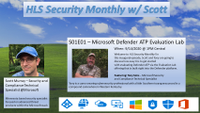
by Scott Muniz | Sep 14, 2020 | Uncategorized
This article is contributed. See the original author and article here.
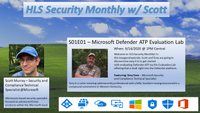 The HLS Security Monthly features Microsoft’s Scott Murray covering various security topics that should be of interest to anyone covering security in the Enterprise space.
The HLS Security Monthly features Microsoft’s Scott Murray covering various security topics that should be of interest to anyone covering security in the Enterprise space.
In this inaugural episode, Microsoft’s Scott Murray and Tony Sims discussed how easy it is to get started with evaluating Defender ATP via the Evaluation Lab offering that is built right into the Defender platform.
Resources:
Thanks for visiting – Michael Gannotti LinkedIn | Twitter
 Michael Gannotti
Michael Gannotti

by Scott Muniz | Sep 14, 2020 | Uncategorized
This article is contributed. See the original author and article here.
“Change is the end result of all true learning.” – Leo Buscaglia.
That statement is most true for change management. In little over a week during Microsoft Ignite 2020, the SharePoint, OneDrive, Yammer and Stream speakers will be firing on all cylinders delivering sessions for this year’s conference – to give you that peek ahead with guidance and excitement – and to answer questions and engage along the way.
We’re to help – to push the end result in your favor. Some sessions are delivered via the Ignite website, while many live on the coming Microsoft 365 Adoption Center: Virtual Hub. This will both help IT pros, developers, and community champions prepare for the Ignite days and beyond (all links will go directly individual session pages – live or on-demand; note: pre-Ignite (before Sept.22.2020), some links may show the Virtual Hub landing page as a placeholder).

All SharePoint, OneDrive, Planner, Stream, Visio, and Lists sessions across five discovery categories (click each to jump to that section):
Steady your minds, find your favorites, and engage.
First, always suggest attending Jeff Teper & Jared Spataro’s overview sessions
Organizations are moving to a hybrid workplace to support the needs of remote and onsite employees. Jeff and team dive into how teams collaborate fluidly with the latest innovations across Microsoft Teams, SharePoint, Microsoft Lists and OneDrive. He’ll also showcase how organizations can improve employee engagement, communications, and knowledge sharing through SharePoint, Yammer, and Project Cortex.
Catch Jeff’s session:
- DB158 | “Enabling collaboration, communication, and knowledge sharing with Microsoft Teams, SharePoint, Project Cortex, and more” by Jeff Teper, CVP – SharePoint, OneDrive, and Teams engineering (delivered three times):
When, where, and how we work is fundamentally changing. Join Jared to learn about the risks and durable trends impacting teamwork, organizational productivity, and employee wellbeing. He’ll share the latest research and a framework for success for every IT professional and business leader to empower People for the new world of work, as well as the latest innovation in Microsoft 365 and Teams empowering human ingenuity at scale.
Catch Jared’s session:
- KEY04 | “The Future of Work” by Jared Spataro, CVP – Microsoft 365 marketing (delivered three times):
[Back to top]
Content and team collaboration with OneDrive, Microsoft Lists, Visio, and Planner
Microsoft 365 is designed to be a universal toolkit for teamwork – to give you the right tools for the right task, along with common services to help you seamlessly work across applications. OneDrive is the clear place to work across all files on web, desktop and mobile. SharePoint promotes the intelligent content service backbone that powers teamwork – to better collaborate on proposals, projects, and campaigns throughout your organization – and is integrated with Microsoft Teams, Microsoft Lists, Planner, Visio and much more.
These sessions put teamwork first:
- DB136 | “Embrace a New Way of Work with Microsoft 365” by Angela Byers and Shin-Yi Lim
(delivered three times):
- OneDrive
- Microsoft Lists
- Visio
- Planner and Tasks
- “Living in Teams? Now, so does your intranet!” by Tejas Mehta and Prateek Dudeja
There will also be two (2x) Ask the Experts opportunities focused on files, lists and tasks running in different time zones to ensure everyone has a chance to connect with our engineering and marketing teams for Q&A. Add them to your session calendar:
- Ask the Experts: “Embrace a New Way of Work with Microsoft 365”
[Back to top]
Project Cortex, knowledge discovery and content intelligence
Our world is rapidly transforming. The amount of data each of us must process is ever increasing. Project Cortex applies advanced AI to accelerate knowledge discovery and content management. Project Cortex automatically organizes content and expertise across your systems and teams, helping you to create topic pages that deliver just-in-time knowledge in the apps people use every day. And Project Cortex enables you to build no-code AI models that understand content, extract important information, and apply metadata to improve compliance, and accelerate content-centric business processes.
These sessions will find you before you find them:
There will also be two (2x) Ask the Experts opportunities running in different time zones to ensure everyone has a chance to connect with our engineering and marketing teams for Q&A. Add them to your session calendar:
- Ask the Experts: “Project Cortex: Knowledge discovery and content intelligence in Microsoft 365”
[Back to top]
Employee engagement and the intelligent intranet
Intranets remain a mission critical tool of digital transformation. They bring together multiple pieces of information, processes, and people to empower organizations to keep employees engaged and informed and to share knowledge and expertise. Modern SharePoint, along with Yammer and Microsoft Stream, is ready to power your entire intelligent intranet with more engaging, easier to create site and web content experiences that provide industry-leading time to value across mobile, web, and desktop.
These sessions will make you intelligent about the intelligent intranet:
[Back to top]
IT pro administration, migration, and the developer platform
With growing digital data in your organizations, need for simplified governance of this corporate data and staying current in compliance are becoming critical for business’s success. With OneDrive, SharePoint and Microsoft 365, your data is in the most secure and compliant place. And we continue the journey to modernize the entire admin experience. The new admin and security centers offer much more control for migration, compliance, and overall management of your modern workspace.
And, devs, we got you covered, too: yo @microsoft/sharepoint –solution-name “hello-Ignite-2020.” Dive into the latest SharePoint Framework innovation, Microsoft Graph power, and all the PnP goodness.
These sessions give you the control to manage and customize your Ignite IT needs to custom apps and APIs:
[Back to top]
Virtual Booth hours to meet with product group team members (Thursday, 9/24)
Toward the end of Ignite, the OneDrive and SharePoint product group will host Virtual Booths via Microsoft Teams. This is a time to see product demos, ask questions and provide feedback directly to the product group team members.
Use this time to learn, connect and engage across several focus areas for OneDrive and SharePoint (links coming soon):
|
Focus area
|
Thursday, Sept. 24th
8:00am – 10:00am PDT
|
Thursday, Sept. 24th
4:00pm – 6:00pm PDT
|
|
OneDrive
|
Join live
|
Join live
|
|
Microsoft Lists and business apps
|
Join live
|
Join live
|
|
Project Cortex
|
Join live
|
Join live
|
|
Intelligent intranet
|
Join live
|
Join live
|
|
Migration and administration
|
Join live
|
Join live
|
|
Security and compliance
|
Join live
|
Join live
|
|
Developer
|
Join live
|
Join live
|
[Back to top]
Other product related, pre-Ignite 2020 session guides
You can also review the following related guides to other technology:
Ignite 2020 (September 22-24) [virtual]
Connect with Microsoft experts and your world-wide community like never before. Experience the all-new Microsoft Ignite on a global scale. Microsoft Ignite is for anyone who is motivated to be on the frontier of innovation and tech. We recognize that the role of IT has shifted considerably, as has the way IT decisions are made. Therefore, our key segments and sessions are meant for all roles, from developers and IT implementers to those who make large-scale purchasing decisions for enterprise tech and security solutions.
Join locally. Connect globally. Register today to:
- Create your agenda and meet the speakers.
- Explore learning modules to sharpen existing skills or add new ones.
- Check out the Featured Partners who help bring Microsoft Ignite to life—and to screens around the world.
- Discuss topics with experts and peers, check out fun activities, and connect with your global community.
For the best event experience, make sure you are registered so you can view content during the live event and access all content on-demand after the event is over. If you are registered, you will be able to stream on-demand, but sessions will not be enabled for download or offline viewing. Visit the session scheduler to explore and discover compelling content. You can refine results by time, session type, industry and more. Simply click the “Add to schedule” button to place a session on your customized schedule, or the RSVP button if it a session with limited capacity.
Learn more at Microsoft.com/Ignite and follow the action on Twitter: @MS_Ignite, @SharePoint, @OneDrive, @Project, @MSVisio and @MicrosoftStream.
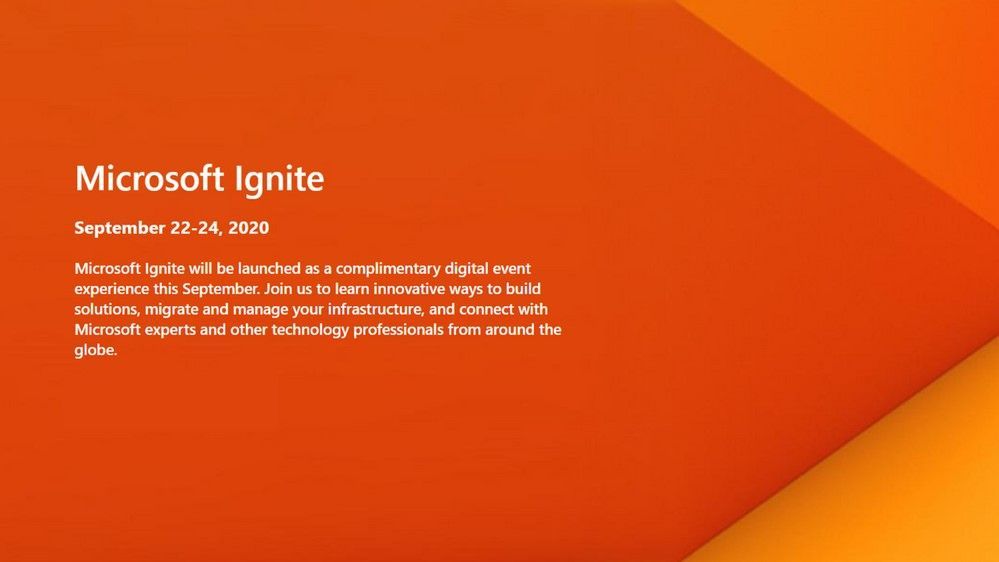 Microsoft Ignite 2020 – Sept.22-24, 2020 myignite.microsoft.com
Microsoft Ignite 2020 – Sept.22-24, 2020 myignite.microsoft.com
See you there,
Mark Kashman, senior product manager – Microsoft
GO TO MYIGNITE






Recent Comments